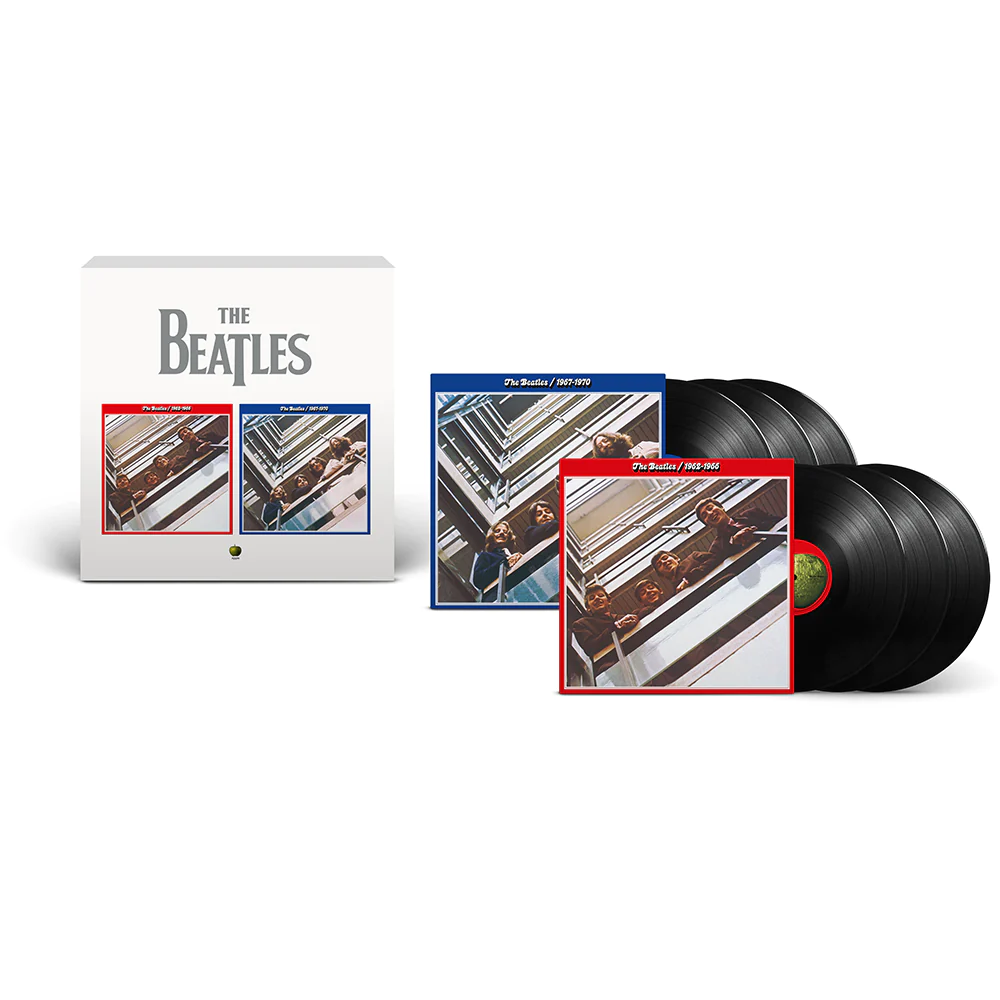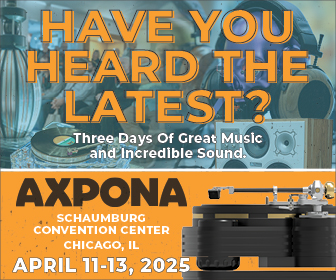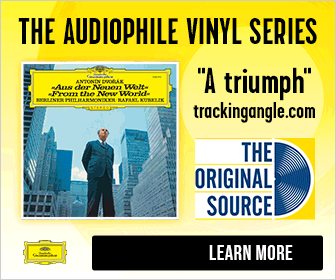Will The Beatles "Red" and "Blue" Expanded Sets Entice Yet Another Young Generation?
is it necessary to ask as a question?
Don't mean to be a buzz kill but "Greatest Hits" compilations, though seemingly extremely attractive, always promise more than they actually deliver. Almost like assembled favorite scenes from a movie that can't begin to satisfy as does the actual movie, songs taken out of the historical context of the albums on which they originally appeared add up to less, not more, no matter how skillfully they are assembled—even if the recording artist is The Beatles.
That's why such albums usually sit on the shelf after the first few plays—at least that's been my experience. The original double LP "Red" and Blue" sets when first released in 1973 created quite a sensation. The back cover of the 1962-1966 set showing the four older gents duplicating the iconic first album pose shot by Angus McBean at E.M.I. House March 5th, 1963 signaled to a generation that youth was fleeting but it also messaged what might have been had the group stayed together—though the latter photo had been taken in 1969 for the aborted Get Back album.
The inner gatefold shot taken summer of 1968 produced even greater pangs of innocence lost showing the four Beatles not separated from but instead amongst a crowd of people standing behind a gate gazing wistfully, almost solemnly at something that has caught the attention of only a few in the group—including all four of them. Could be the fab four staring at their youth in the rear view mirror.
You don't need to be told that the songs on the four sides of the original "Red" album represent an astonishingly varied collection of melodic and lyrical invention. It's where most Americans could for the first time hear the songs from A Hard Day's Night and Help! not mixed up with film orchestral cues, "Paperback Writer" in stereo on an album and "I Feel Fine" in real not electronically processed stereo. It's also where Brits finally got "She Loves You" on an album!
My "go to" copies (which I realized when prepping for this review that I'd not played in decades) are original U.K. editions cut by Harry T. Moss ("H.T.M." in the lead out groove area—I hate "dead wax"). Sean Magee cut from those same tapes for a 2014 reissue using Moss's cutting notes, he told me in an interview for my "previous endeavor".
I never did buy or review those records. However the Moss cut records are brighter than the same tracks on original U.K. issues and Moss applied some compression, or at least to me that's how they now sound.
Going into these two expanded to three LP sets, the first thought was, why not give listeners the original "hit" documents among the tracks and not the recent or new remixes? But once listening began, especially on the "Red" record's more primitively recorded tracks, all was fine. In fact, "de-mixing" the mostly hard left/right early tracks "Please Please Me", "From Me to You" (etc.) and remixing them to "stereo" works reasonably well, though these tracks take on the odd "hologram effect" noted on Revolver. And Martin has retained some of the original brightness in his "Red" album remixes.
Moving on to the "Blue" album points out the Giles Martin re-mixing issues many older Beatles fans had and have—yes, the placement is better on many tracks but they lack the originals' transparency, "sparkle" and excitement due in part to excessive compression and Mr. Martin's softer top end approach, plus of course the digits—compare "Here Comes the Sun" for instance. Ringo's cymbals sound like air brakes, the snare sounds weak and bass is excessive—which is an issue on other tracks as well. I can't understand why Ringo Starr would be happy with how his drums now sound on these remixes.
The guitar rawness on "Revolution" is gone. Compare the immediacy of the original "Hey Jude" with the new softer, but spatially improved one. Your choice of course. And I'm done with these comparisons because this set is really aimed at younger vinyl buying listeners who will surely find the sound outstanding, especially compared to the sonic swill of most contemporary productions (though I must admit it's getting better, getting better all the time).
Everyone will appreciate the expanded song choices, though of course for some of us breaking up Sgt. Pepper's... and Abbey Road just doesn't work and best proves my original point about "hits" compilations. Another observation based on the newly remixed tracks here: Giles Martin's EQ choices have definitely improved and become more subtle. As for "Now and Then", it's here, your choice and for me it completes the song selection so happy to have it included.
I figure older Beatles fans, for stereo recordings at least, will stick mostly with their original pressings, particularly if they own the U.K. originals, and younger listeners, especially the really young ones will be as attracted to this music as have previous generations. That's The Beatles magic and it appears to be as strong as it ever was. How lucky many of us were to have experienced it from The Ed Sullivan Show and "Beatlemania" forward to today. This nicely packaged, well-pressed six LP box set selling for the very reasonable price of $149.00 (or $25 per record not counting the packaging) emphatically makes the case, if you at all need it to be made. This set wraps up The Beatles reissues—(at least until we get the original stereo records cut from tape).
It's difficult to imagine anything like The Beatles will ever again happen.
















































